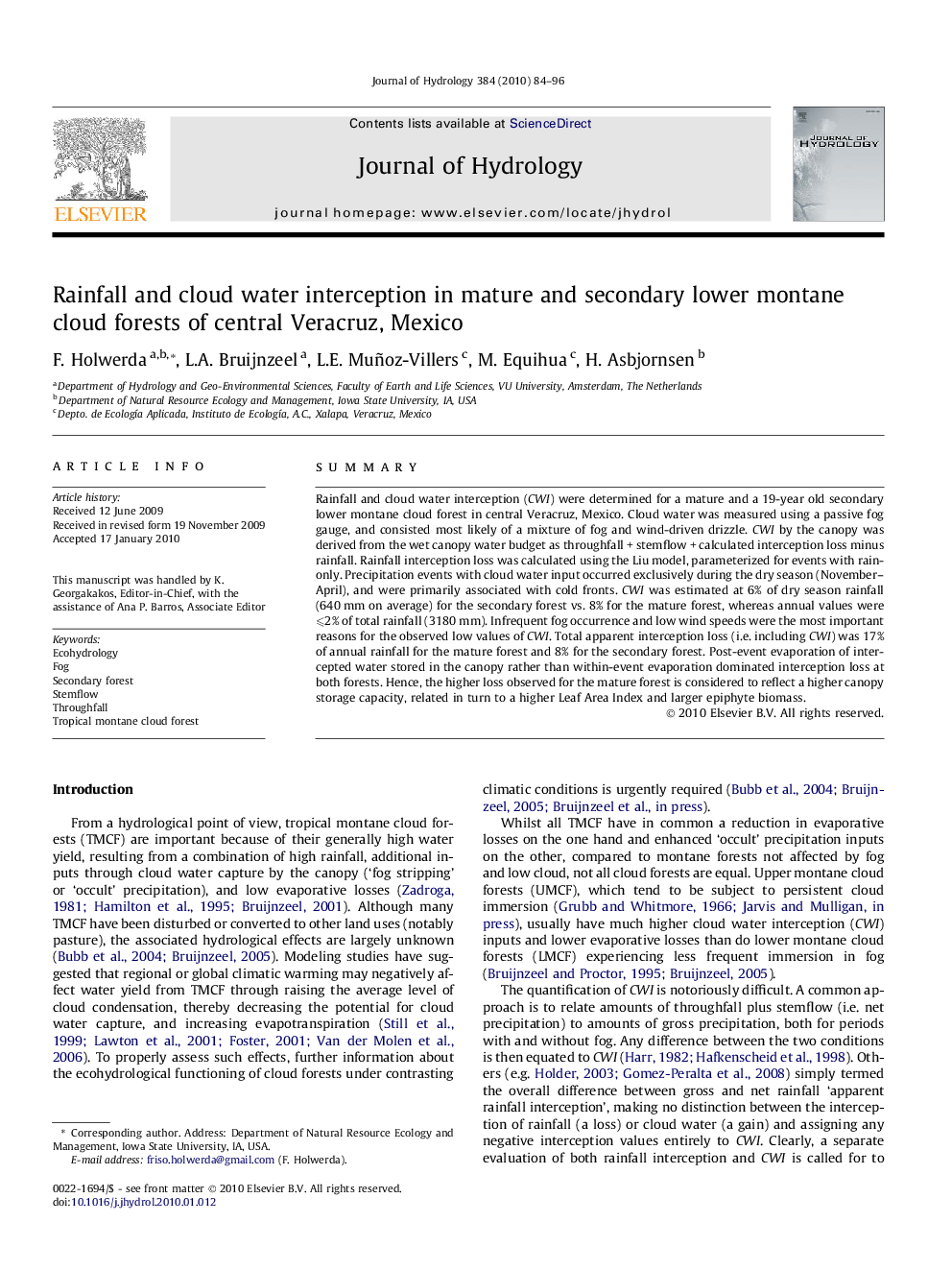| Article ID | Journal | Published Year | Pages | File Type |
|---|---|---|---|---|
| 4578395 | Journal of Hydrology | 2010 | 13 Pages |
SummaryRainfall and cloud water interception (CWI) were determined for a mature and a 19-year old secondary lower montane cloud forest in central Veracruz, Mexico. Cloud water was measured using a passive fog gauge, and consisted most likely of a mixture of fog and wind-driven drizzle. CWI by the canopy was derived from the wet canopy water budget as throughfall + stemflow + calculated interception loss minus rainfall. Rainfall interception loss was calculated using the Liu model, parameterized for events with rain-only. Precipitation events with cloud water input occurred exclusively during the dry season (November–April), and were primarily associated with cold fronts. CWI was estimated at 6% of dry season rainfall (640 mm on average) for the secondary forest vs. 8% for the mature forest, whereas annual values were ⩽2% of total rainfall (3180 mm). Infrequent fog occurrence and low wind speeds were the most important reasons for the observed low values of CWI. Total apparent interception loss (i.e. including CWI) was 17% of annual rainfall for the mature forest and 8% for the secondary forest. Post-event evaporation of intercepted water stored in the canopy rather than within-event evaporation dominated interception loss at both forests. Hence, the higher loss observed for the mature forest is considered to reflect a higher canopy storage capacity, related in turn to a higher Leaf Area Index and larger epiphyte biomass.
